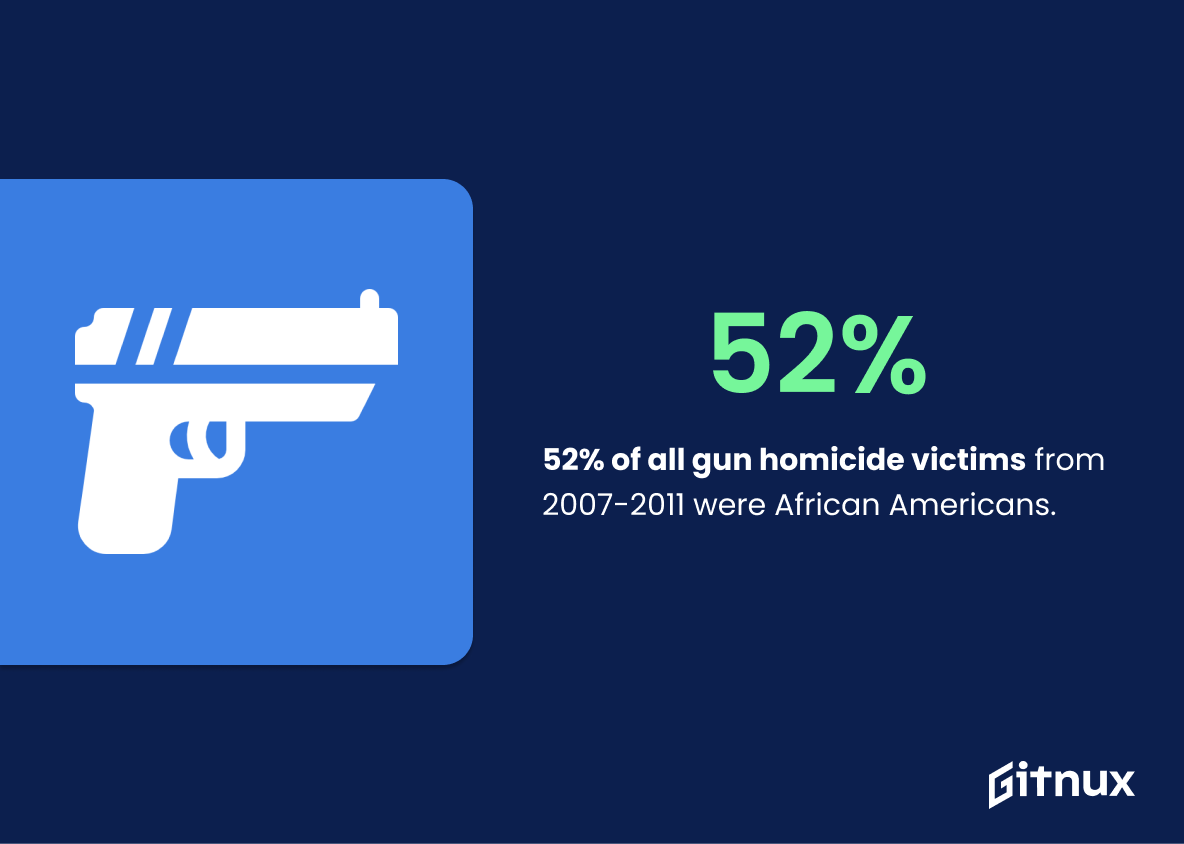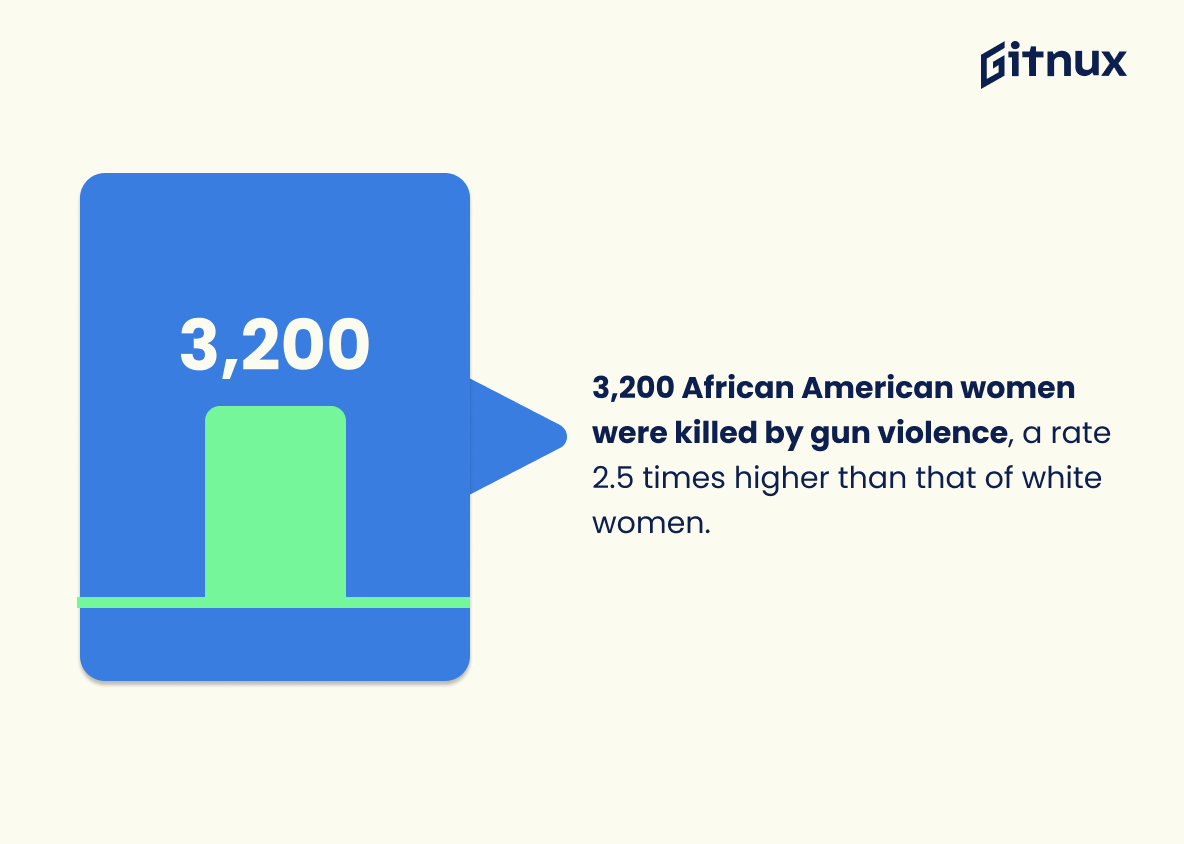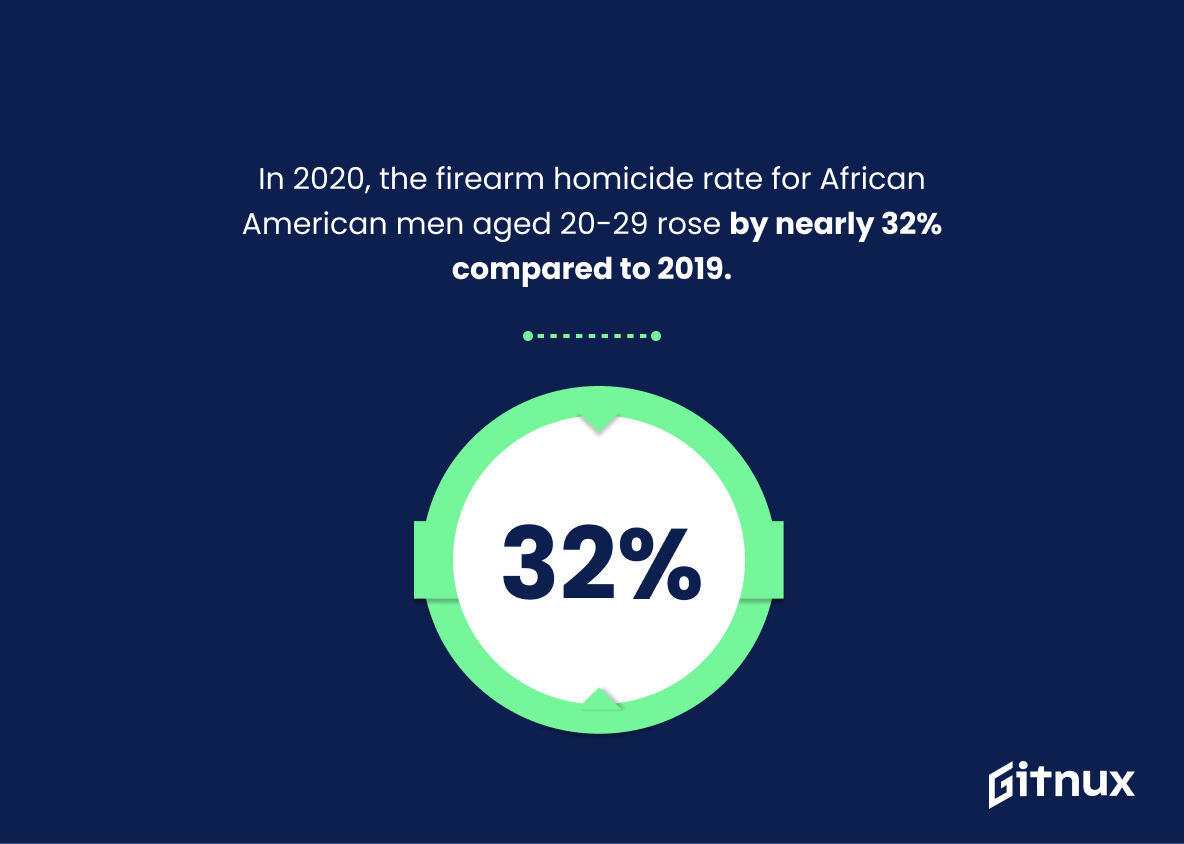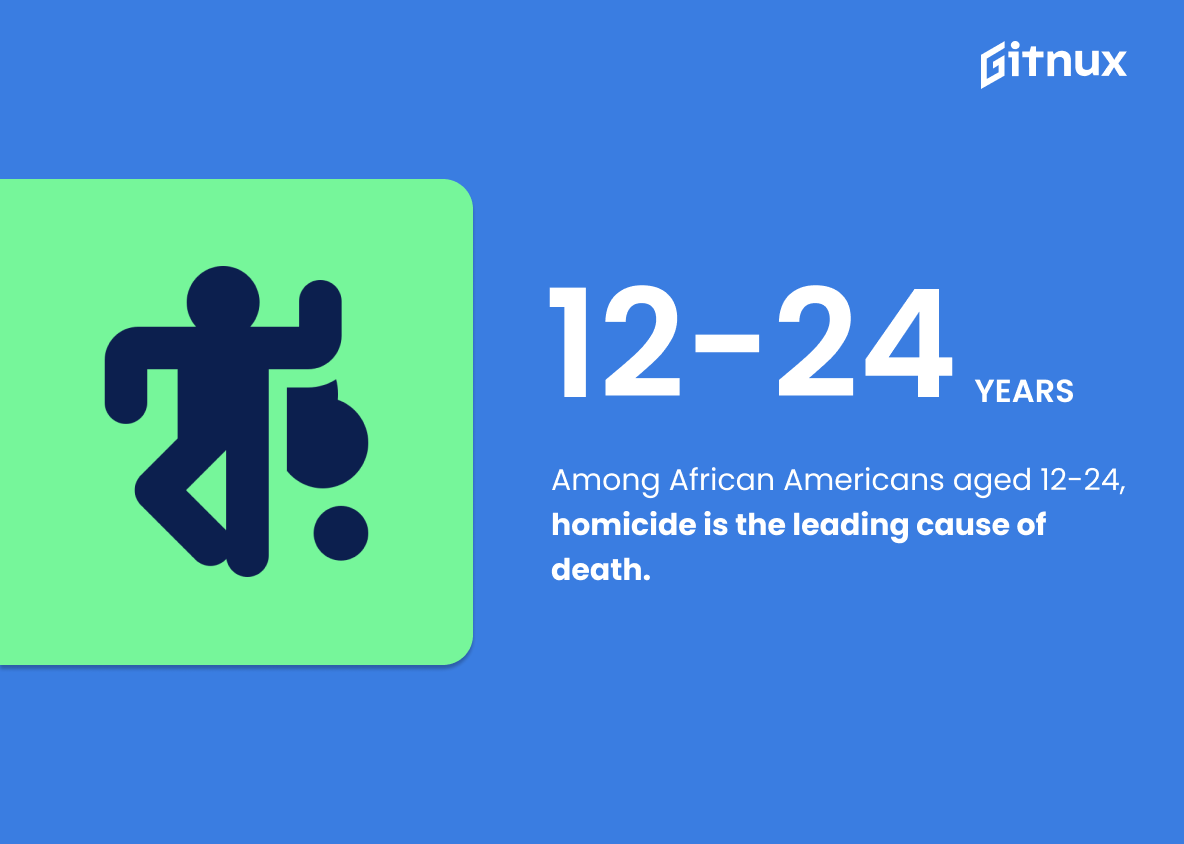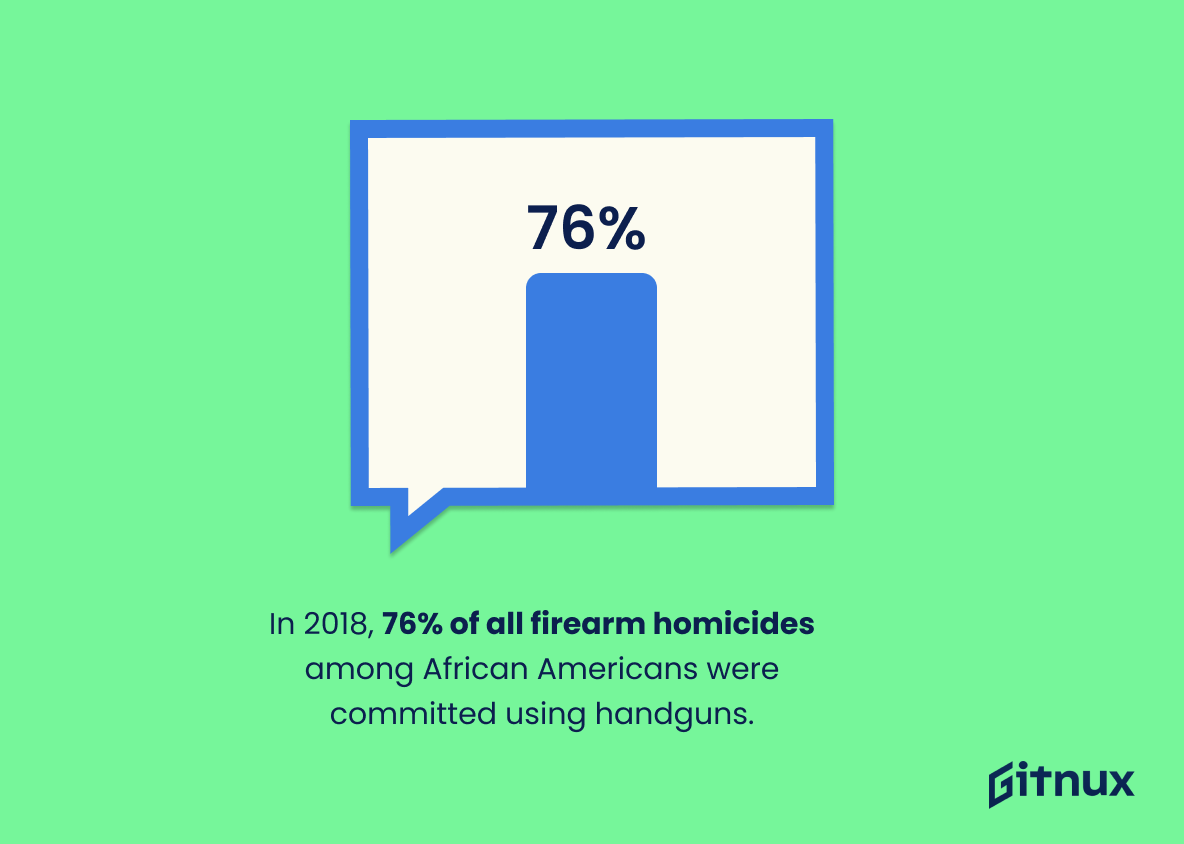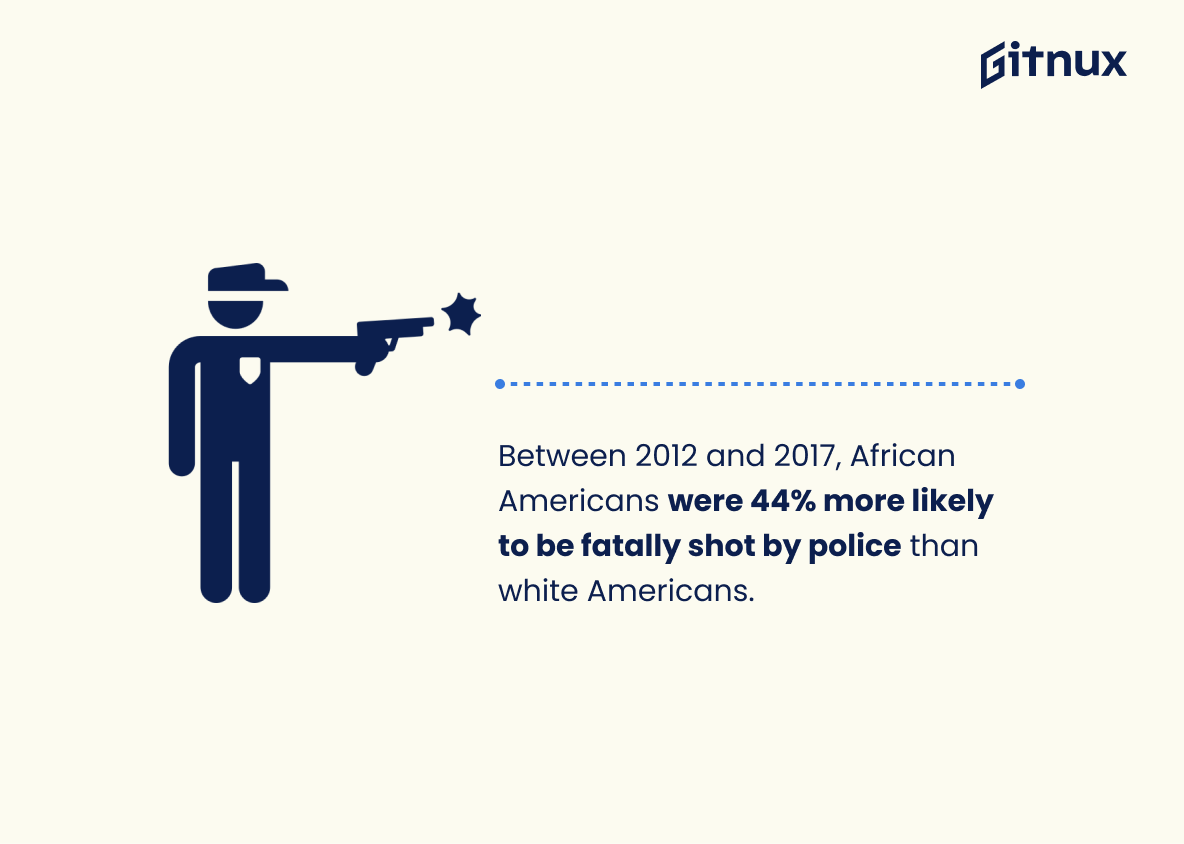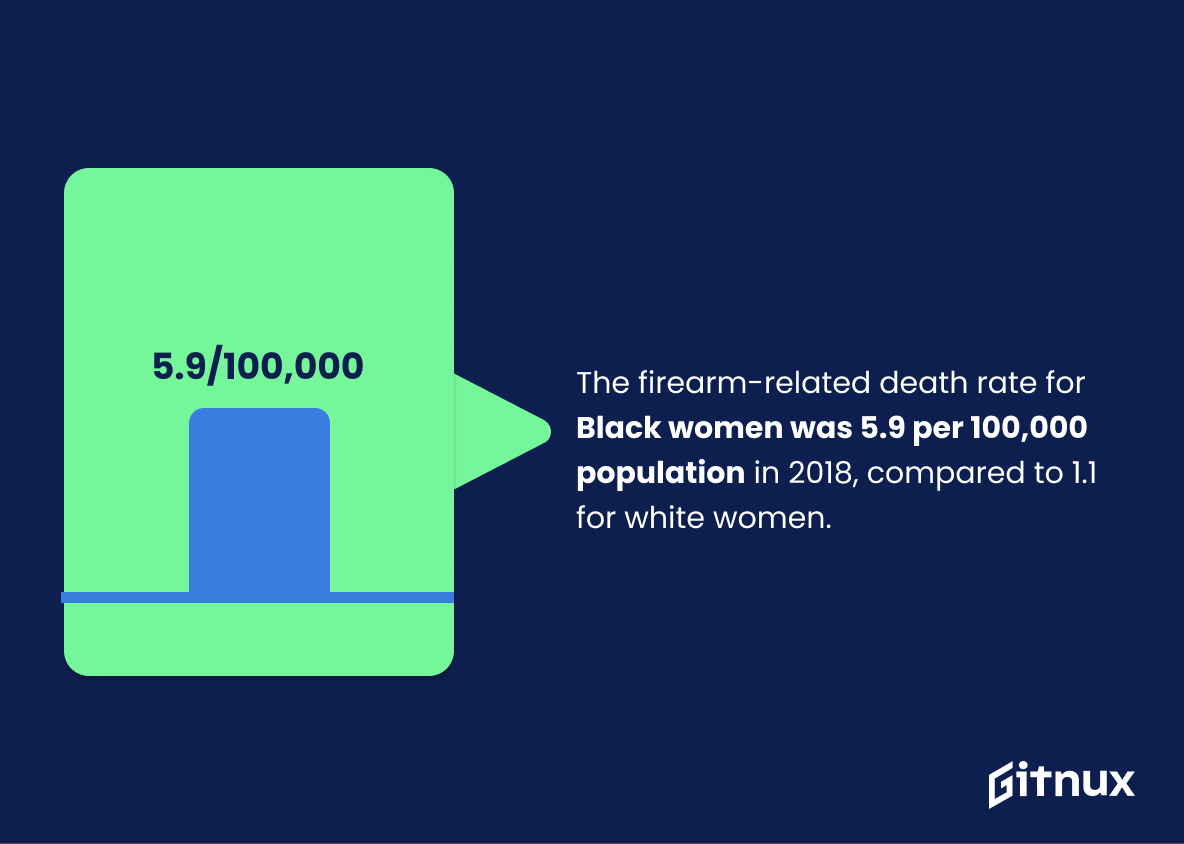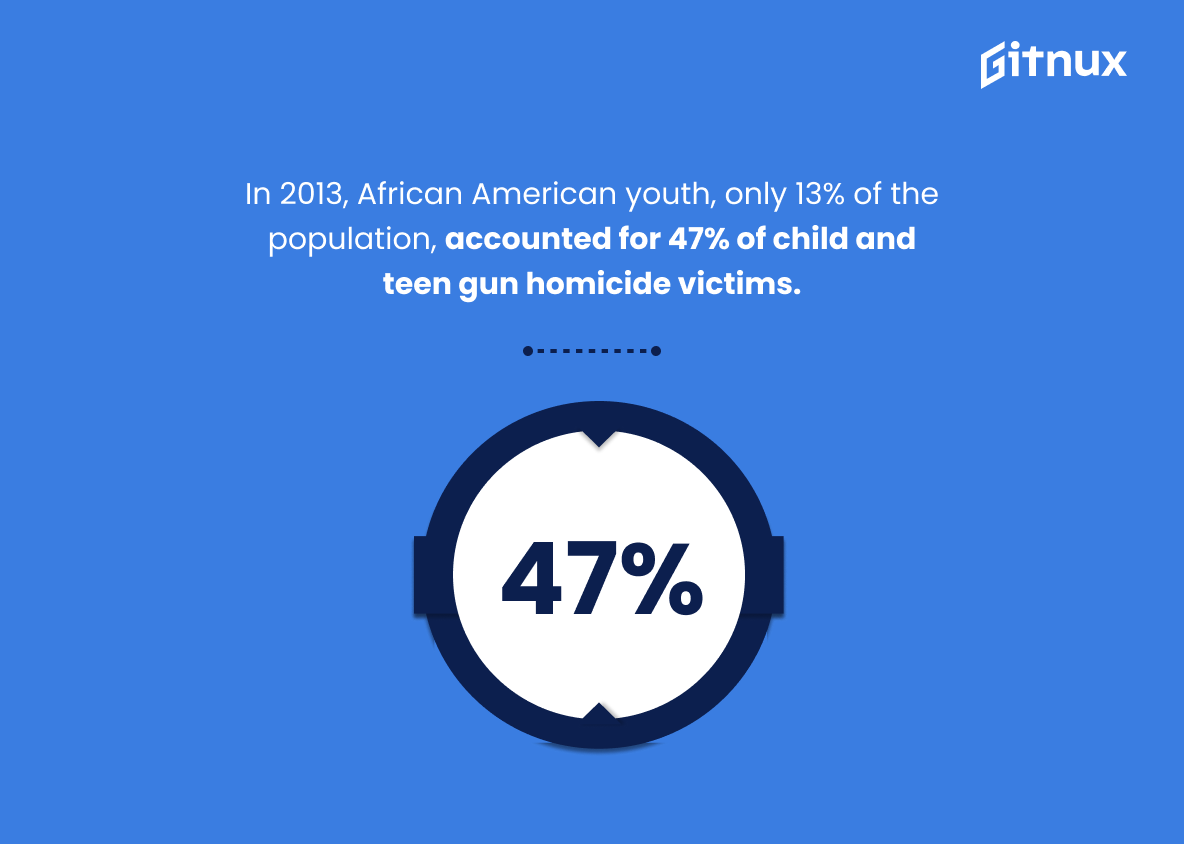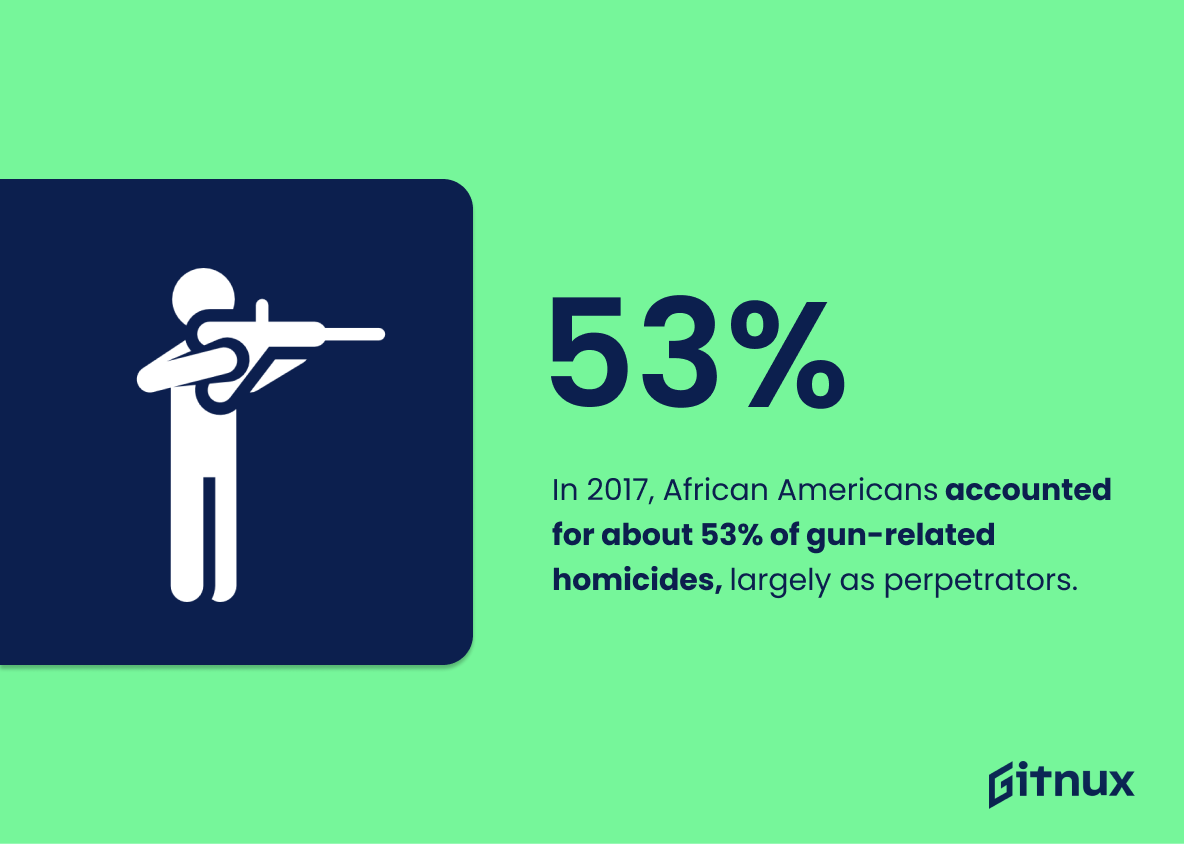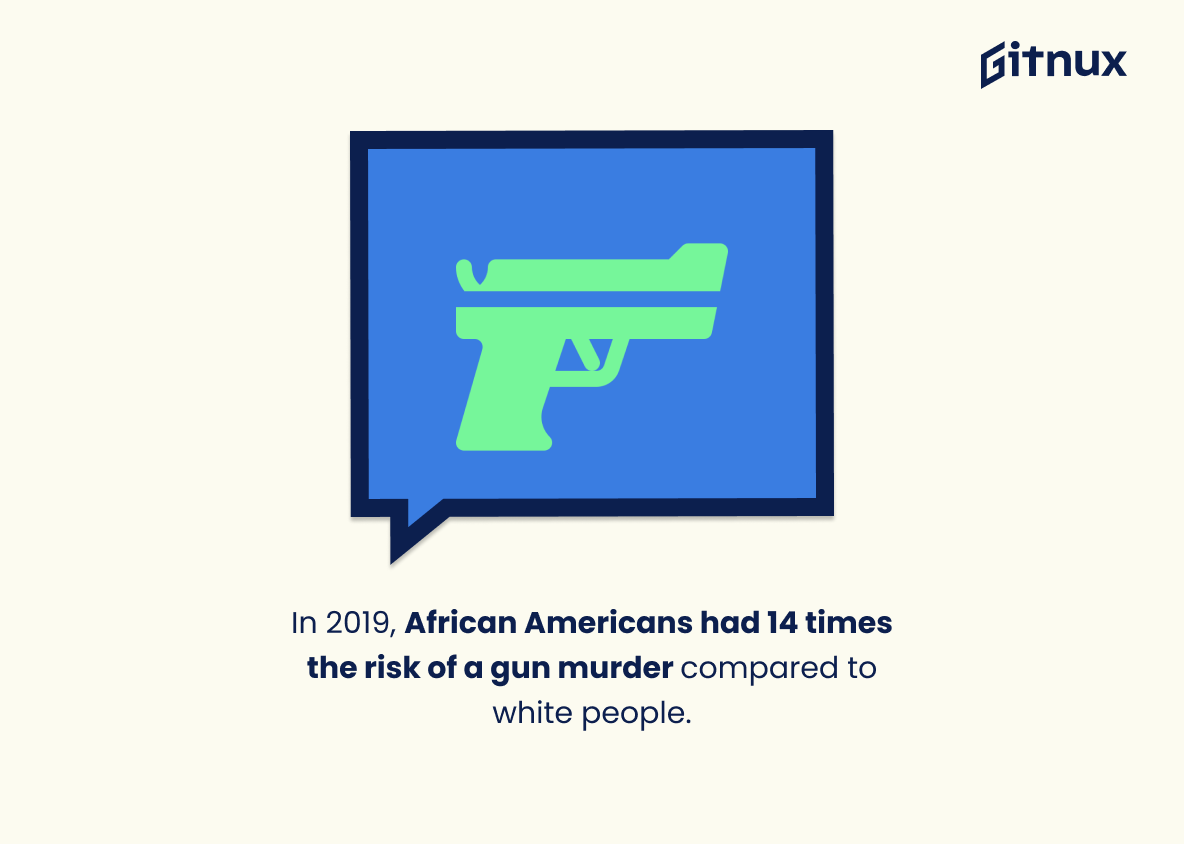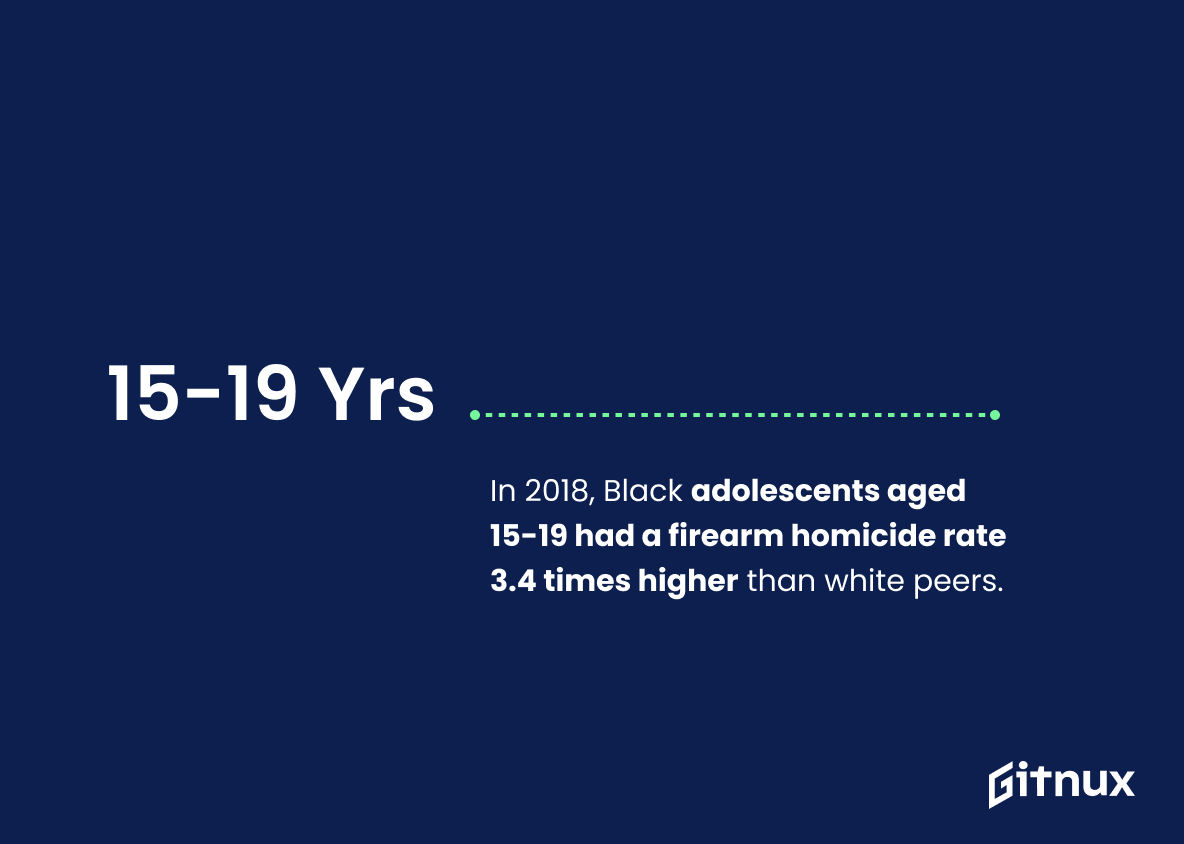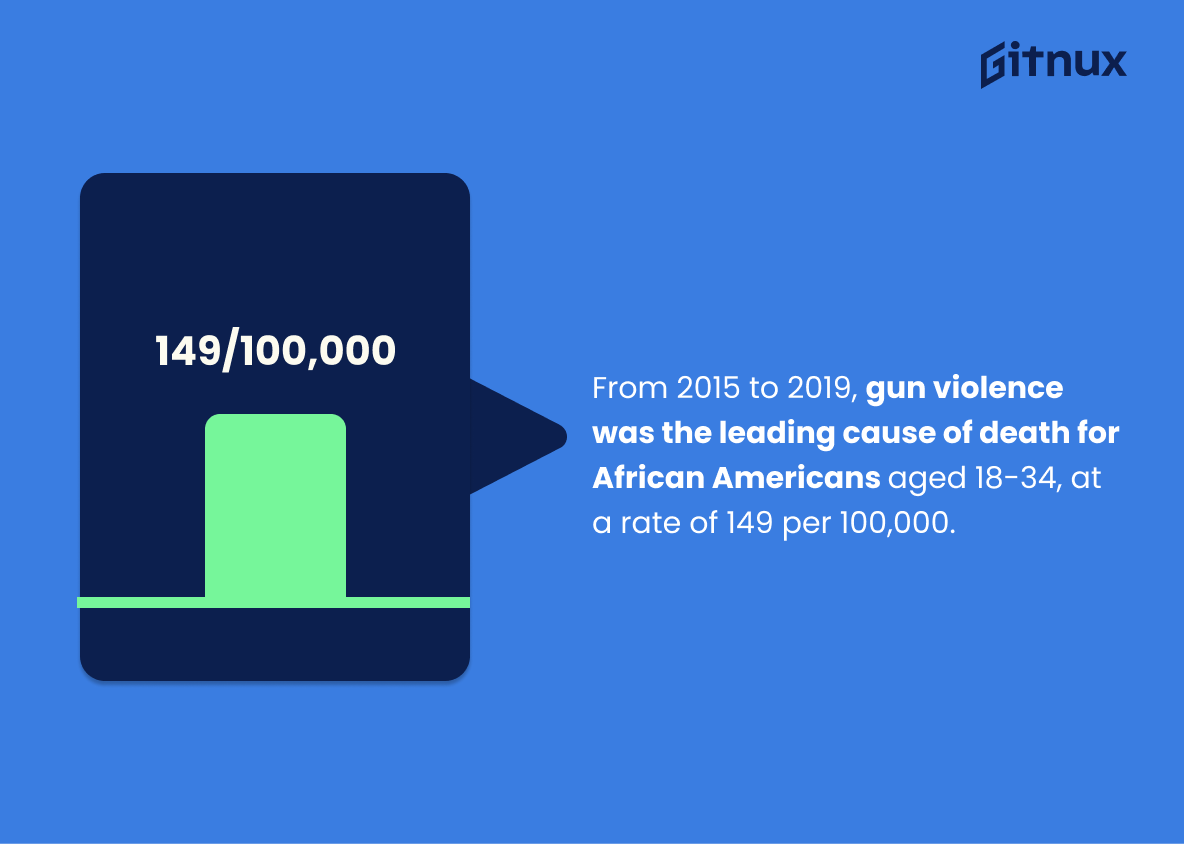The statistics on African American gun violence are alarming. In 2019, firearm homicide rate among African Americans was 18.2 victims per 100,000 population and between 2014 and 2018 the annual average number of African American homicide victims in the US was 7,661. Even more concerning is that 57% of total gun homicides occur in the Black community despite only making up 13% of the US population in 2020. Furthermore, 52% of all gun homicide victims from 2007-2011 were African Americans while 25 times higher than white men for 2019’s gun homicide rate for Black men alone.
In 2020 there has been an increase with 31%, compared to 2019’s numbers; additionally 14 times more likely to die from a gunshot wound when comparing black children/teens against their white counterparts over 2007-2020 period according to data collected by Spark Adobe page 0KjCChBbfaqpi/. Moreover 3200 women died due to firearms related incidents back 2010 at a 2 ½ time greater risk than White Women as reported by NCBI PMC3403727 article . Gun deaths amongst males aged 15 – 34 accounted 39 % out off all fatalities within this demographic group during year 2019 (Everytown Research). The same age bracket experienced 32 % rise regarding Firearm Homicide Rate For Black Men Alone during year 2020 (Brookings Institute) which makes it even worse considering that Homicides represent leading cause death amongst 12 – 24 years old Blacks(American Psychological Association). 76 percent off all Firearms Related Deaths Amongst Africans Americans where committed using Handguns according FBI Stats Services Page 41 report , 4 point three percentage points representing lifetime prevalence victimization via guns violence across youth demographics based upon National Academies research paper “Gun Violence: Predisposing Factors And Intervention Strategies” & finally 44 percent increased chance being fatally shot police officer if you’re black rather then white as Al Jazeera News Article dated January 2017 reveals .
This statistic is a stark reminder of the disproportionate impact of gun violence on African Americans. It highlights the need for greater awareness and action to address the issue of gun violence in African American communities. It is a call to action to ensure that African Americans are not disproportionately affected by gun violence and that their safety is prioritized.
57% of total gun homicides occur in the Black community, despite only making up 13% of the US population in 2020.
This statistic is a stark reminder of the disproportionate amount of gun violence that African Americans face in the United States. Despite making up only 13% of the population, 57% of gun homicides occur in the Black community, highlighting the systemic racism and inequality that exists in our society. This statistic is a call to action to address the underlying causes of gun violence in the African American community and to ensure that all Americans have access to the same safety and security.
African American Gun Violence Statistics Overview
52% of all gun homicide victims from 2007-2011 were African Americans.
This statistic is a stark reminder of the disproportionate impact of gun violence on African Americans. It highlights the need for further research into the causes of gun violence in African American communities and the implementation of effective strategies to reduce the number of gun homicides in these communities.
In 2020, firearm homicides involving African Americans increased by 31% compared to 2019.
This statistic is a stark reminder of the disproportionate impact of gun violence on African Americans. It highlights the urgent need for action to address the underlying causes of this violence and to ensure that African Americans are safe and protected from gun violence.
From 2007 to 2020, African American children and teens were 14 times more likely to die from gun homicide compared to white children and teens.
This statistic is a stark reminder of the disproportionate impact of gun violence on African American children and teens. It highlights the urgent need to address the systemic issues that have led to this alarming disparity in gun homicide rates. It is a call to action to ensure that all children and teens, regardless of race, have access to safe and secure environments.
In 2010, 3,200 African American women were killed by gun violence, a rate nearly 2.5 times higher than the rate among white women.
This statistic is a stark reminder of the disproportionate impact of gun violence on African American women. It highlights the need for greater awareness and action to address this issue, as well as the need for more research into the causes of this disparity. It is a call to action to ensure that African American women are not disproportionately affected by gun violence.
In 2020, the firearm homicide rate for African American men aged 20-29 rose by nearly 32% compared to 2019.
This statistic is a stark reminder of the disproportionate impact of gun violence on African American men aged 20-29. It highlights the urgent need for action to address the underlying causes of this alarming rise in firearm homicides. It is a call to action to ensure that African American men in this age group are provided with the resources and support they need to stay safe and protected from gun violence.
Among African Americans aged 12-24, homicide is the leading cause of death.
This statistic is a stark reminder of the devastating impact gun violence has on African American youth. It highlights the urgent need for action to address this issue and protect the lives of young people in this community.
In 2018, 76% of all firearm homicides among African Americans were committed using handguns.
This statistic is a stark reminder of the disproportionate impact of gun violence on African Americans. It highlights the fact that handguns are the weapon of choice for those committing firearm homicides against African Americans, and that this is a major issue that needs to be addressed.
Between 2012 and 2017, African Americans were 44% more likely to be fatally shot by police compared to white Americans.
This statistic is a stark reminder of the systemic racism that exists in the United States. It highlights the disproportionate amount of violence that African Americans face at the hands of law enforcement, and the need for reform in order to ensure that all citizens are treated equally and fairly.
The firearm-related death rate for Black women was 5.9 per 100,000 population in 2018, compared to 1.1 for white women.
This statistic serves as a stark reminder of the disproportionate impact of gun violence on African American women. It highlights the need for greater awareness and action to address the issue of gun violence in the African American community. The disparity in the firearm-related death rate between Black and white women is a clear indication of the systemic racism and inequality that exists in our society.
In 2013, African American children and teens represented 47% of total child and teen gun homicide victims, despite only making up 13% of the youth population.
This statistic is a stark reminder of the disproportionate impact gun violence has on African American children and teens. It highlights the fact that, despite making up only 13% of the youth population, African American children and teens are disproportionately affected by gun violence, accounting for nearly half of all gun homicide victims. This is a sobering reminder of the need to address the issue of gun violence in the African American community.
In 2017, African Americans were more likely to be perpetrators of gun violence, accounting for roughly 53% of gun-related homicides.
This statistic is a stark reminder of the disproportionate impact of gun violence on African Americans. It highlights the need for further research into the causes of gun violence in this community and the development of effective strategies to reduce it. It also serves as a call to action for policy makers to address the underlying issues that contribute to this alarming trend.
In 2019, African Americans had 14 times the risk of a gun murder compared to white people.
This statistic is a stark reminder of the disproportionate risk African Americans face when it comes to gun violence. It highlights the need for further action to be taken to address the systemic issues that lead to such a disparity in gun murder rates. It is a call to action to ensure that African Americans are provided with the same level of safety and security as their white counterparts.
In 2018, the firearm homicide rate for Black adolescents aged 15-19 was 3.4 times greater than white adolescents of the same age group.
This statistic serves as a stark reminder of the disproportionate impact of gun violence on African American adolescents. It highlights the need for greater attention to be paid to the issue of gun violence in African American communities, and the need for more effective strategies to address this issue.
Between 2015 and 2019, gun violence was the leading cause of death among African Americans aged 18 to 34, with a death rate of 149 per 100,000 population.
This statistic is a stark reminder of the disproportionate impact of gun violence on African Americans. It highlights the urgent need for action to address this issue, as the death rate of 149 per 100,000 population is significantly higher than the national average. It is a call to action to ensure that African Americans are not disproportionately affected by gun violence.
Conclusion
The statistics presented in this blog post demonstrate the disproportionate impact of gun violence on African Americans. In 2019, firearm homicide rate among African Americans was 18.2 victims per 100,000 population and between 2014 and 2018, the annual average number of African American homicide victims in the US was 7,661. Furthermore, 57% of total gun homicides occur in the Black community despite only making up 13% of the US population in 2020; 52% of all gun homicide victims from 2007-2011 were also African American.
In addition to these alarming figures for overall deaths due to firearms within this demographic group, further disparities are evident when looking at gender or age specific data: In 2019 25 times more black men than white men died by a firearm related death while 3200 black women were killed by guns that same year – 2.5 times higher than their white counterparts – and 76 percent involved handguns as opposed to other weapons such as rifles or shotguns . Moreover , children aged 12-24 have been 14 times more likely to die from a gunshot wound compared with whites over recent years (2007-2020) whilst 39 percent off all fatalities amongst 15 – 34 year old males has been attributed directly to firearms since 2019 . Finally , it is worth noting that although 53 %of perpetrators behind fatal shootings involving blacks have themselves belonged within this ethnic group during 2017 , they still remain far more vulnerable than any other racial category when considering mortality rates associated with gunfire across America today .
References
0. – https://www.nij.ojp.gov
1. – https://www.www.thetrace.org
2. – https://www.wonder.cdc.gov
3. – https://www.www.apa.org
4. – https://www.www.pcrm.org
5. – https://www.www.pewresearch.org
6. – https://www.lawcenter.giffords.org
7. – https://www.www.aljazeera.com
8. – https://www.gunsandamerica.org
9. – https://www.apnews.com
10. – https://www.www.childrensdefense.org
11. – https://www.www.ncbi.nlm.nih.gov
12. – https://www.www.cdc.gov
13. – https://www.spark.adobe.com
14. – https://www.www.justice.gov
15. – https://www.www.brookings.edu
